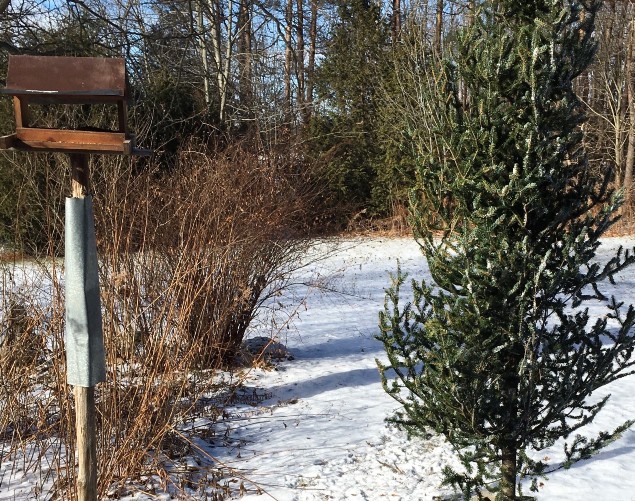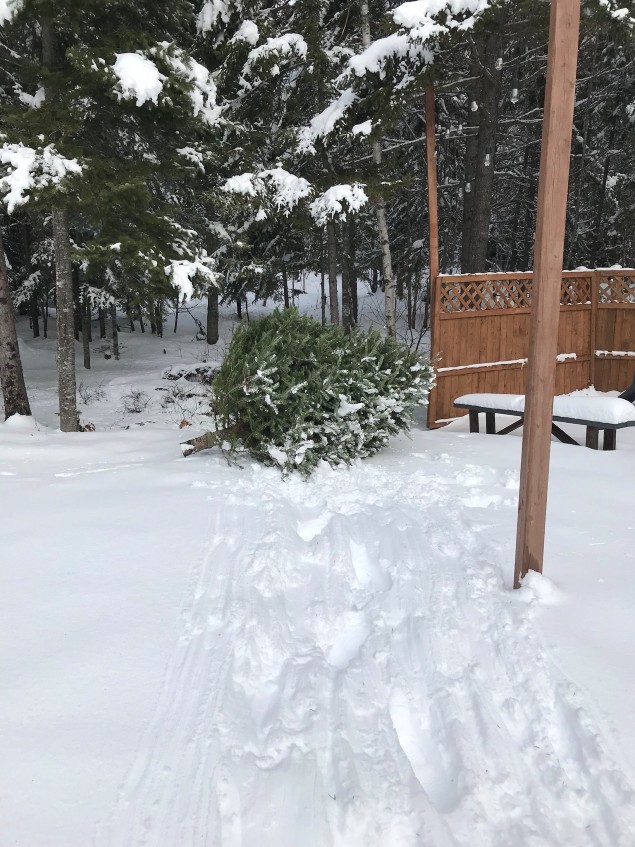At this time of year, Canadians are taking decorations off their Christmas trees and, if they are natural trees, most people will put them on the front lawn to be picked up by municipal service trucks. But conservationists say it would be much better to put the trees in backyards to provide a home for birds and to eventually provide compost for the soil.
There are birds that migrate south for the winter, but many that stay behind and could use shelter on cold nights and during storms. Conservation biologist Dan Kraus of the Nature Conservancy of Canada suggests propping the tree near another, against a fence or simply laying it in a garden. For those looking for activities involving children, he proposes they decorate the trees with pine cones filled with peanut butter, strings of peanuts and suet that would provide food for the birds.

Discarded evergreen trees provide safe shelter for birds that overwinter in Canada, says conservation biologist Dan Kraus. (Nature Conservancy of Canada)
Trees can provide wildlife habitat
“Evergreens offer a safe place for birds to rest while they visit your feeder,” says Kraus. “Another benefit is that if you leave the tree in your garden over the summer, it will continue to provide habitat for wildlife and improve your soil as it decomposes.”
The tree’s needles will eventually fall off. Branches can be cut and laid where spring flowers begin to come up. The trunk can rest nearby. These parts of the tree will hold moisture and, as they decompose, will help build the soil. Toads may rest under the log and insects including pollinators may burrow in the wood.

Native trees used for Christmas decoration such as spruce and balsam fir break down quickly and enrich the soil. (Nature Conservancy of Canada)
Discarded trees have many uses
“By fall, the branches and trunk will begin to decompose and turn into soil,” says Kraus. “Many of our Christmas trees, particularly spruce and balsam fir, have very low rot resistance and break down quickly when exposed to the elements. The more contact the cut branches and trunk have with the ground, the quicker it will decompose. Drilling holes in the tree trunk will speed up that process.”
Alternatively, trees picked up by municipalities are sometimes chipped and composted or they may be used on trails, says Kraus. They may even be placed on shores to help prevent erosion. Some pulp and paper companies burn them for fuel as an alternative to burning oil.







For reasons beyond our control, and for an undetermined period of time, our comment section is now closed. However, our social networks remain open to your contributions.